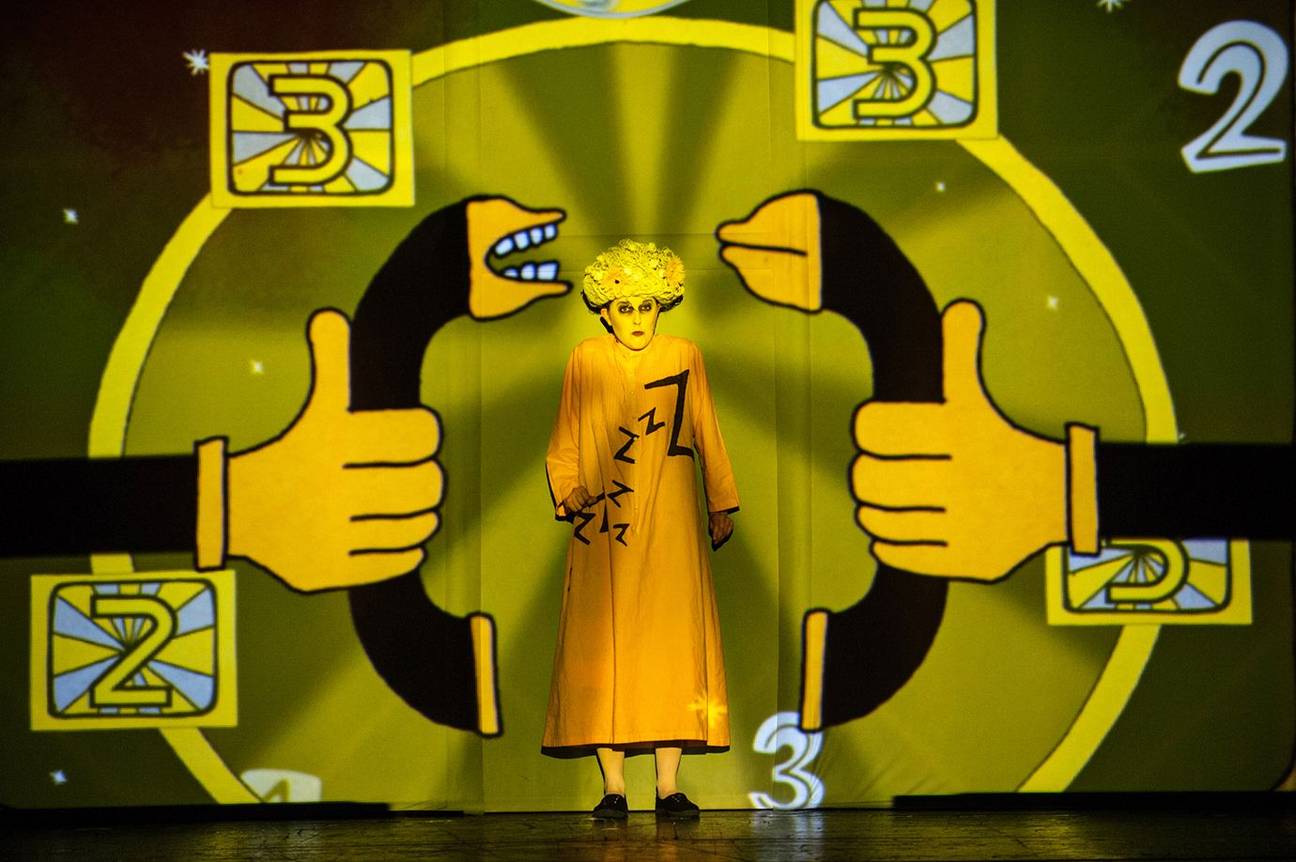In a joyous mixture of animation, music, and theatrical performance, the English company 1927 presents a variation on the theme of the golem that challenges our complacency in relation to new technology.

© Bernhard Mueller
The English company 1927 kneads a dystopian world
A figure in Jewish tradition, the golem is a being fashioned out of clay to serve its human creator. It doesn’t speak, living only to obey, until the day it attempts to free itself from its master and create chaos. Since Rabbi Loew’s in sixteenth-century Prague, there have been many legends of the golem. You can see the clay giant’s menacing shadow behind the figure of Frankenstein and other humanoid monsters that haunt Western fiction.
This latest incarnation, by 1927, an English company founded by Suzanne Andrade and Paul Barritt, is a pop expressionist fable that combines animation, theatrical performance, and live music. With humour and ridicule, they take us into a dystopian world in which mass-produced golems end up positioning themselves inside people’s heads in order to identify and predict their every desire.
What attracted you to the legend of the golem?
Suzanne Andrade: Reading Gustav Meyrink’s The Golem, about fifteen years ago, we thought it was a good idea for the type of work we do. There was a main character who could be played by an actor and his clay alter ego who could be brought to life using animation.
The seeds were planted and, years later, we began to do some research and came back to the original Jewish myth and all its variations. We thought there was something in this concept of the golem that was very similar to the invasive technology we use today and that could be the starting point for a highly topical show.
Why did you choose to make it a dystopia?
Andrade: The dystopia came about by itself. We started off with the idea of the golem as a neutral creature and the notion of control and chain of command. In the original story, Rabbi Loew tells the golem what to do and the creature carries out the task. We thought it was more interesting to disrupt this chain of command by having someone else tell the golem what to do.
We have the illusion of control over things, when it may in fact be the other way around. Once this idea came to us, the whole show began to move towards its dystopian conclusion, even though it wasn’t what we had in mind at the start.
Does the simplicity of clay as a material also echo the traditional techniques that you use in the show?
Andrade: Definitely. Everything is very simple. We avoid using sophisticated special effects and technology. We adapt our techniques to our needs. Everything is drawn by hand and begins with cut-out paper puppets. We only use a fraction of what technology makes possible nowadays, but we want to keep it simple and open to accidents. Human, in other words.
What are your influences and inspirations?
Andrade: There are many. We are like sponges, soaking up a wide variety of periods and images. I think silent film is a fundamental one that we keep coming back to, because of the simplicity and legibility of the action and its very visual style of narration. Constructivism also has a great appeal for us, though we try to detach ourselves from it a little.
Then there are all the things we have absorbed, even if they don’t feature directly in our work. We love David Lynch films and their dream logic. Jan Svankmajer’s animated films have always been a big inspiration, as well as very early cartoons.
How did the 1927 company come about?
Andrade: I met Paul Barritt, the animator, twelve years ago. He began to create illustrations for one of the stories I was writing and performing. We put it on in public and then we were joined by an actor, followed by a musician.
From then on, everything slowly fell into place. We performed our first sketches in cabarets and at music festivals. They were short sketches, amusing animated stories. In the beginning, we had no intention of putting our shows on in theatres, then the scripts got longer and we started to receive offers to perform them in different places, and here we are today.
Was it aimed particularly at a young audience?
Andrade: No, not at all. It was intended for drunk people on a Friday night. In a cabaret, you share the stage with magicians, comedians, striptease acts, and musicians. It was all about entertainment; what mattered was to attract the audience’s attention quickly before they migrated to the bar.
How do you want to leave the spectator feeling?
Andrade: It has always been important, for us, to give people a good time and encourage people to come to the theatre who don’t often go. Our shows are meant for everyone and we want them to be highly accessible. With Golem, we would be happy if people leave asking themselves questions about their use of technology. Since seeing the show, my friend’s father refers to his iPhone as his golem, which is great.
> 1927: Golem. 25/11 > 02/12, Théâtre National, Bruxelles
Read more about: Podium
Fijn dat je wil reageren. Wie reageert, gaat akkoord met onze huisregels. Hoe reageren via Disqus? Een woordje uitleg.